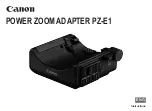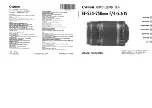
#4 -13511 Crestwood Place, Richmond, BC, V6V 2E9, Canada
+ 1.778.776.3288
discoverbattery.com
be split according to the capacity or age of the batteries
respectively.
•
Note: The type of lead-acid batteries may differ between
strings as long as the required charging regime and
voltage (VPC) per string is guaranteed.
2.4 Cells in Series Strings
•
Discover
®
Tubular Gel cells/blocks may be connected in series
to increase system voltage.
•
In the case of each series connected string, only use batteries
of the same voltage, capacity, design and age.
•
The resistance of the cables or connector bars in each string
must be the same, e.g. same cross-section, same length and
same conductor type (copper, aluminium.
•
Each string should be equipped with disconnect capabilities
(breakers) for maintenance and safety purposes.
2.5 Pre-installation Control
•
Check cells or blocks for evidence of leakage.
•
All cells or blocks with visible defects such as cracked jars
or containers, loose terminal posts, or other unrecoverable
problems shall be rejected.
•
Before installation, in cases where the battery container is
dirty, wash with soapy water only.
•
Carry out OCV (Open Circuit Voltage) measurements on each
individual cell or block and check their compliance against the
following variation and absolute voltage criteria:
1.
The OCV must not deviate from average more than
±0.025V for 2V cells, ± 0.04V for 6V blocks and ± 0.06V for
12V blocks.
2.
The OCV must not be lower than 2.05V for 2V cells, 6.15V
for 6V blocks and 12.4V for 12V blocks.
3.
The OCV of a fully charged cell/block at 20°C/68°F is 2.11V
for 2V cells, 6.33V for 6V blocks and 12.66V for 12V blocks.
4.
Per 10% Depth of Discharge (DoD) the voltage is reduced
by .015VPC (15mVPC). (e.g. OCV of 2.05V equals a 40%
discharged cell (2.11V – (4 x .015V) = 2.05V)).
2.6 Electrical Connections
•
Ensure that the cells are installed and connected in the correct
polarity.
•
Check that all contact surfaces are clean. If required, clean
poles/terminals with a brass brush/pad.
•
You may slightly lubricate terminal inserts and connections with
silicone grease. Petroleum-based lubricants are not recommended.
•
Tighten the terminal screws using a torque loading of 22 Nm
or 16 Ft-lbs. Electrical connections between cells/blocks or cells/
blocks on separate levels or racks should be made making sure to
minimize mechanical strain on the battery poles/terminals.
•
For systems where the total battery voltage is measured at the
controller, use oversized cables between the controller and the
battery to minimize the voltage drop.
•
Check the battery’s total voltage. It should match the number of
cells/blocks connected in series. If the measurement is not as
expected, recheck the connections for proper polarity.
•
The installer of the battery is responsible for conformity to
local electrical standards. In certain jurisdictions batteries
with a nominal voltage > 75 V may require an EC conformity
declaration in acc. with the low voltage directive (73/23/EEC),
which confirms that the CE marking is applied to the battery.
The company installing the battery is responsible for the
declaration and applying the CE marking.
•
For future identification, apply individual cell/block numbers in
sequence starting from one end of the series string. Also apply
identification letters or numbers for the parallel strings.
•
Only connect the battery to the DC power supply after ensuring
that the polarity is correct, the charger is switched off, and the
load is disconnected.
2.7 Instrumentation
•
For large installations consider using permanent instrumentation
for measurements and alarms. These include voltmeters,
ammeters, Ah counters, high and low voltage indicators, ground
fault detector(s) and temperature sensor(s) for the battery and the
ambient air.
•
For smaller installations, use portable test equipment. The
battery temperature sensors shall be fixed on the cell/block
side wall or negative pole/terminal.
•
The use of monitoring and recording systems is mandatory in
“Hybrid” systems.
2.8 Commissioning Charge
The initial charge is very important for the future battery operation
and the battery’s service life. It is performed as a “full charge” as
listed in paragraph 3.2.1. Keep records in the battery’s logbook.
3. Operations
STAND ALONE SYSTEMS
In “Stand-alone” systems, the renewable source (e.g. PV array)
is the only charging source available for the battery. In some
systems, an external source - like a diesel generator - can be
used but this is not within the basic design principle of a stand-
alone system. (e.g. the source is engaged only intermittently
and manually by the user in order to serve excessive loads or to
maintain the batteries.)
Two types of charger controllers can be used:
•
On-Off PV controllers:
The controller interrupts the charging current from the PV array
(off state) when the battery voltage reaches the high regulation
point (e.g 2.45VPC) and re-connects it (on state) when the
voltage drops to the low regulation point (e.g. 2.35VPC).
•
Constant Voltage type (PWM method is also included here):
Once the battery voltage reaches the regulation point, the
controller limits the charging current to keep the voltage
constant at this level as long as there is enough power
available from the renewable source. Two sub types may be
defined here:
•
One voltage step controllers: There is only one voltage
regulation point.
•
Two voltage steps controllers: There are two voltage
regulation points. Initially the controller maintains an
elevated voltage to recharge the battery fast (absorption
stage) then, after a certain time or other criteria, it steps back
to a lower voltage to prevent unnecessary overcharging
(floating stage).
HYBRID SYSTEMS
In “Hybrid” systems, the renewable source size is most often
smaller than the application load. There is always an independent
source available - diesel or grid – to recharge the battery in every
cycle. The same independent source can also be engaged, either
automatically at regular intervals or manually when required to
maintain the battery with equalizing charges. Only Constant Voltage
controllers (usually with two voltage steps) shall be used.




























